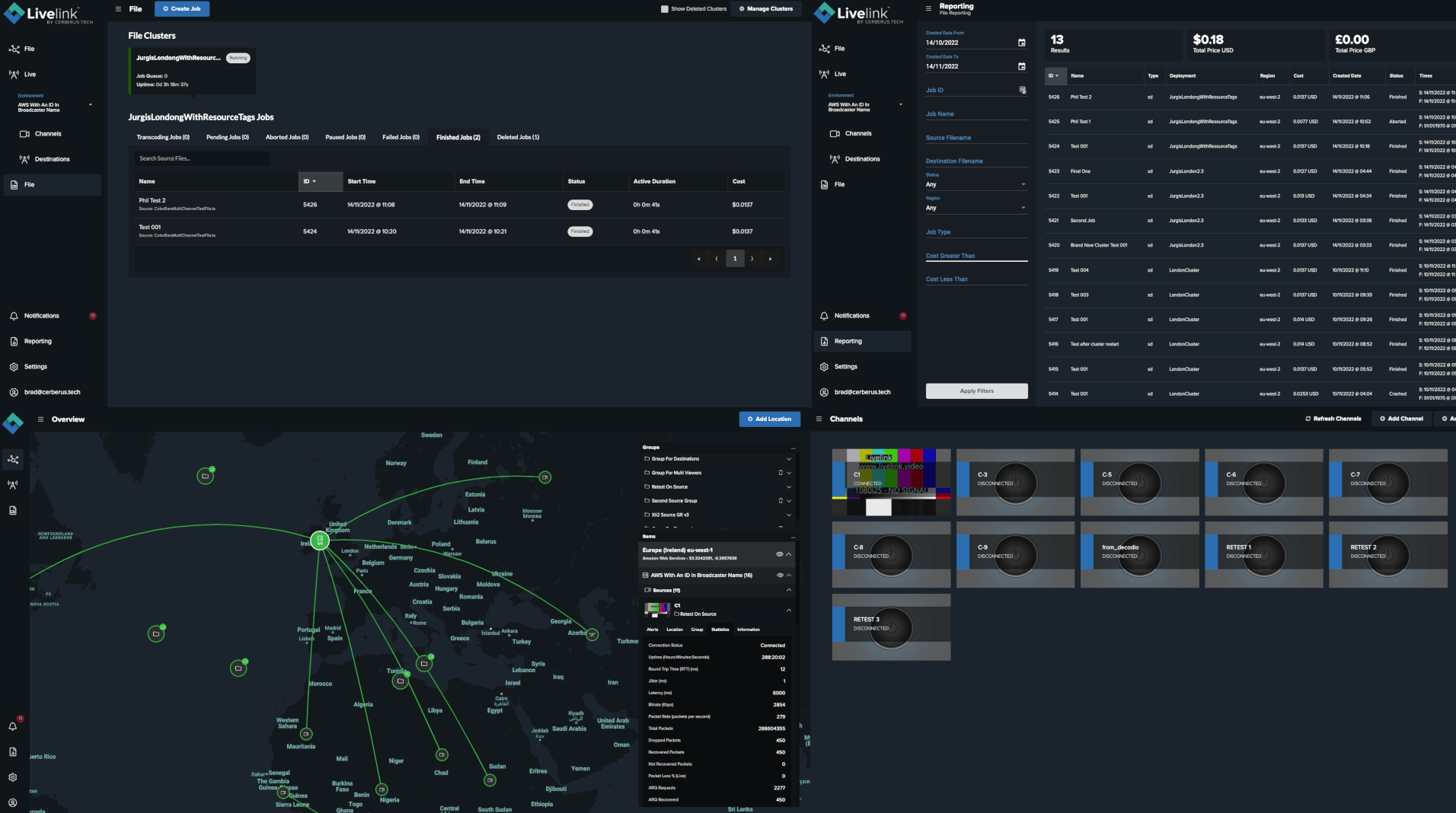As well as competing technologies and other broadcast workflow enhancement tools vying for the attention of, well frankly anyone who will listen, sports rights stakeholders are increasingly impacted by significant commercial dynamics, unfavourable global macro-economics and an unsettled corporate landscape.
All of this is against the backdrop of diverse audience habits and the demand to create novel content engagement opportunities for fans. Sports broadcasting is not for the faint of heart.
The convergence of traditional and IP workflows has also brought about unprecedented opportunities to address some of these challenges, but in many ways, it has just brought further complexity to the party. This blog aims to address these complexities and look at ways to bring broadcast workflow simplicity back to the fore.
Entering the Arena – IP for Sports Broadcast
Live sports production, contribution and distribution methods and workflows are numerous and very often nuanced depending on the sport or event that is taking place, or even the venues they are taking place in. Of course, traditional satellite and fibre infrastructure remains commonplace but the emergence of IP technologies, combined to some extent with the pivot to remote production, has opened up multiple opportunities to enhance efficiency, reduce overall production overheads and impactfully address sustainability concerns.
Where production is concerned the increasing adoption of SMPTE ST 2110 standards has allowed broadcast and production facilities to work with independent, uncompressed video, audio and ancillary data essences within an IP network. Integration of the highest quality and highest resolution production equipment in sports and events venues has stepped up content creation and production workflows. Combining that with the removal of restrictions caused by the length and physical connection ports of a coaxial cable, these IP media transport standards offer a new world of opportunity.
Turning to contribution and distribution workflows, the exponential increase of IP workflow integrations across the broadcast industry has resulted in the adoption of a variety of protocols and solutions. Sports broadcasters and rights takers have adopted and implemented a number of these stream protocols and standards into their workflows, including; RIST, SRT, Zixi, RTMP and HLS. Not only this, broadcasters and affiliates have purpose-built their infrastructure around these protocols and standards.
As a lower-cost, broadcast-quality option, IP undoubtedly has a key place now and in the future of content delivery and sports broadcasting. But it is essential that content owners are able to realise the full potential of their IP workflows.
Is Too Much Choice A Bad Thing?
It’s no longer one size fits all! With satellite and fibre distribution the feed is typically made available in mezzanine format for everyone and the broadcaster needs to invest in the capabilities to receive these. If an individual broadcaster needs the feed in a different format then it’s on them and their service partners to transcode or re-encode the mezzanine source into what’s required.
With IP and cloud distribution, due to broadcasters having different receive capabilities, there is an expectation that the feed will be made available in a number of different formats and wrapped in different protocols, a veritable pic’n’mix of IP. Some require, for example, 1080i25, h.264 video @ 20Mbps with MPEG audio delivered as a Zixi feed, whilst others might require 1080p50, h.264 video @ 8Mbps with AAC audio delivered as an SRT feed.
This sounds quite complicated, and it sometimes is, but you’ve also got to appreciate that IP is growing in use for delivering lower-tiered sports or additional feeds from tier 1 sports and these often do not have the same commercial value. It’s difficult, therefore, to justify the technical fees to transcode or process each of the feeds further for each individual operator and if you want eyeballs on the content then it’s easier to give the broadcasters what they want.
Choice can work for broadcasters if those obstacles are removed. A nice approach would be for the content owners to make a few profiles available so that broadcasters have a choice upstream which therefore lowers the technical costs to get the content ‘on-air’.
Livelink – A Simplification Strategy
Livelink was developed from the ground up as a scalable cloud distribution platform that works for you when you need it, allowing everyone to gain from the commercial and technical benefits of IP.
A clean UI with an intuitive scheduler allows a single operator to easily execute complex broadcast operations for large distributions through a single pane of glass including:
- Multiple IP protocol support, in and out.
- Transcoding to other bitrates, codecs including audio channel selection or shuffling.
- Motion Compensated Frame Rate Conversion.
- OTT Packaging
- Scheduling start and end times including control for extended or ending schedules.

Plus, the platform is 100% pay-as-you-go which means it works for you when you need it, meeting operational workflow goals and hitting many sustainability targets, ensuring that equipment and cloud resources are only utilised when required. The ability to launch 100 of something only for the duration required has never been so easy.
Conclusion
At Cerberus Tech, we understand the challenges posed by the complexity of sports broadcasting. Livelink stands as a testament to our commitment to simplicity. Our goal is clear: Remove unnecessary barriers, support customers with a straightforward transition to cloud-based delivery, and ensure that every content owner can effortlessly navigate the IP broadcasting landscape. No compromises.
Click here to find out more, check out some case studies and book a Livelink demo.



